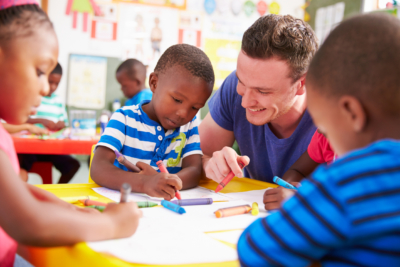Summer is winding down, which means it’s time for the kids to go back to school! Although, depending on where you live, school might look a little different this year. With precautions around preventing the spread of COVID-19, a lot of school systems have migrated to a hybrid online and in-classroom curriculum or an online curriculum altogether.
6 Useful Tips for the Greenest School Year Yet
The start of a new season is an exciting time, and the perfect opportunity to embrace new beginnings and teach your children how to live a more eco-conscious lifestyle.
1. Take an inventory of the supplies your kids already have before buying more
Chances are that after taking an inventory of your children’s school supplies, you’ll find plenty of pencils and unused notebooks that can be reused. Reduce your consumerism and avoid making impulse purchase decisions by making a list of the supplies your kids actually need before going shopping.
2. Make mindful purchases of technological tools
Technological tools, such as calculators, tablets, and laptops, are an increasingly mandatory portion of kids’ school needs, especially as many schools have shifted to a hybrid online/in-classroom or fully online curriculum.
As vital as they are to our kids’ education, it’s important to purchase these items with mindfulness of their potential risks to the planet. Many of these tools can have devastating impacts on the environment due to manufacturing and disposal.
In order to help with your shopping decisions, you can reference Greenpeace’s Guide to Greener Electronics to view a ranking of the world’s largest electronics companies in terms of their efforts to combat climate change, eliminate hazardous substances from their products, recycle responsibly, and use sustainable materials in their products and packaging.
3. Monitor the use of electronics
If your kids will be doing some or all of their schooling from home, it’s important to teach them that there are other ways to conserve energy in addition to turning the lights off when they leave a room. Remind them to turn off/unplug electronics (including laptops, computers, and tablets) at the end of each school day.
You may also want to invest in a Smart Power Strip, which stops drawing electricity for appliances that are turned off, meaning you don’t have to remember to switch the strip on and off every time.
4. Shop secondhand for clothes
Kids tend to outgrow clothing relatively quickly. Purchasing new clothes from retail stores not only wastes a lot of money for very little value, but “fast fashion” also contributes significantly to environmental degradation from the GMO crops, oil-based synthetic fabrics, and toxic dyes used to manufacture them. The
To learn more about the environmental implications of fast-fashion, be sure to check out our blog Why It’s Time to Say Goodbye to Fast Fashion. Embrace the eco-friendly principle of reuse (while also saving money) by purchasing back-to-school clothing for your children from flea markets, consignment shops, and thrift stores.
A fun way to get new school clothes for free is to organize a clothing swap with family, friends, or neighbors. Be sure to donate the clothing your children no longer fit into to a local charity.
5. Green your school commute—whether it’s daily, or a few times per week
To help reduce air pollution, get your kids to school sustainably. Public transportation (including the school bus), biking, walking, or carpooling are all greener alternatives to driving alone that can help you save gas and reduce smog emissions. Plus, by walking or commuting to school, you and your kids can get some exercise and maybe make some new friends along the way.
6. If your children are heading back to campus, be sure to pack a lunch
Did you know the average American elementary school disposes of 20,000 pounds of lunch waste every year? That’s the equivalent of 10 tons of trash per school! Pack a whole food lunch for your child/children in a reusable lunch box with a reusable bottle of water or milk, and reduce what they throw away—paper bags, food packaging, and wasted food. Your kids will also eat much healthier.
Despite what you may have thought, preparing a lunch made with whole food (not packaged, processed food) doesn’t have to be hard or time-consuming. Try getting your kids involved in choosing lunch ingredients, so they’ll be less likely to throw out things they don’t want to eat.
Check out Kitchen Stewardship or 100 Days of Real Food for a bunch of easy, healthy ideas for things to pack in your child/children’s lunchbox
While certainly exciting, back-to-school can be a stressful time for both parents and kids, but with these eco-friendly tips, at least you can find peace of mind knowing you are helping the environment.
Get More Ideas for a Green Life from Kiwi Energy
Be sure to learn more ways in which you can help the environment by staying tuned on our blog and sign up for Kiwi Energy today!


